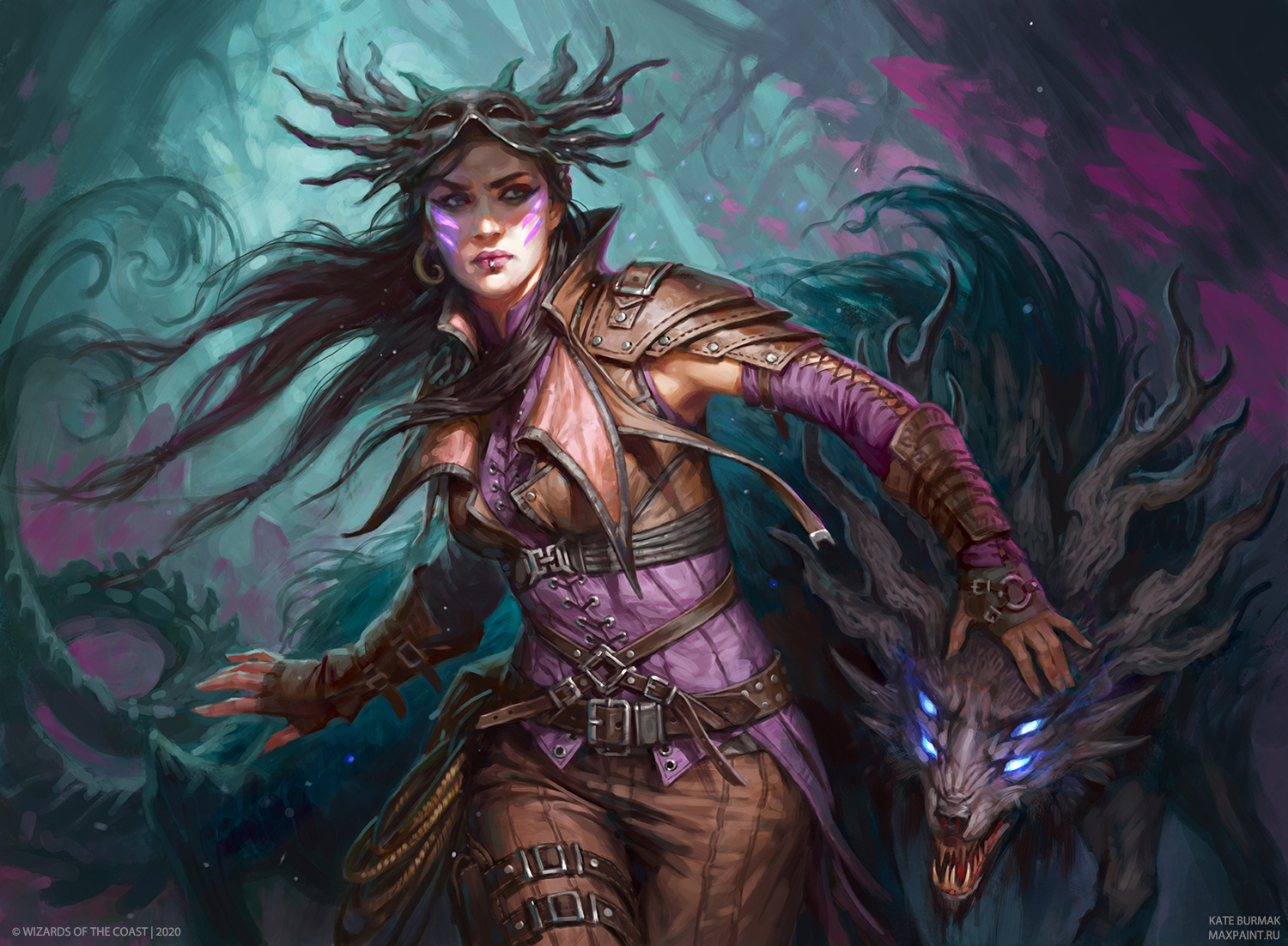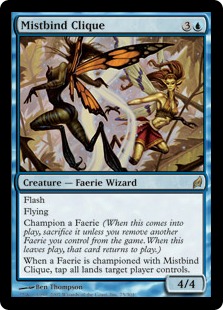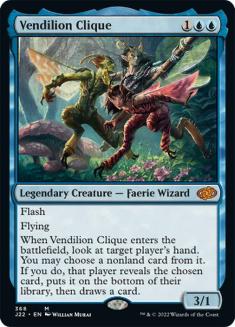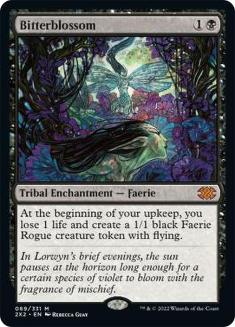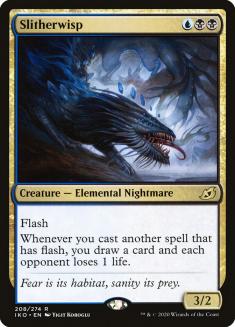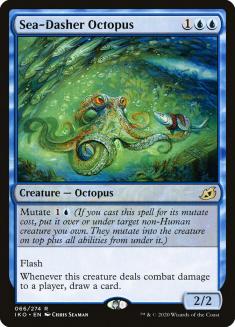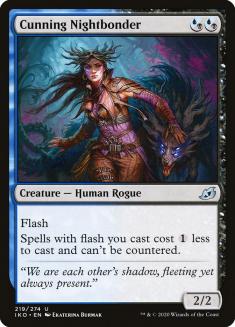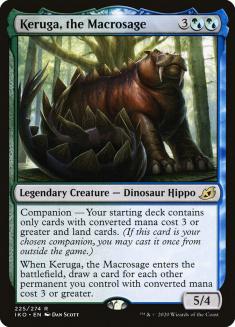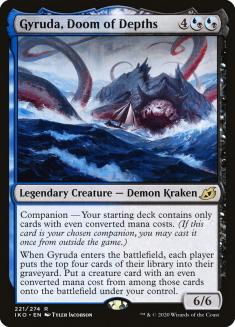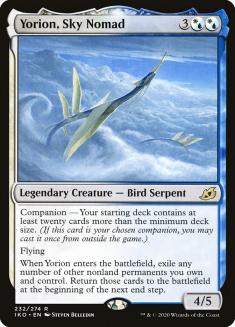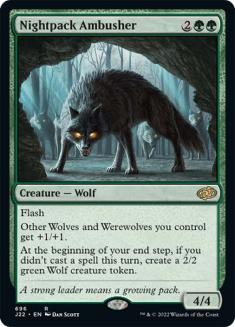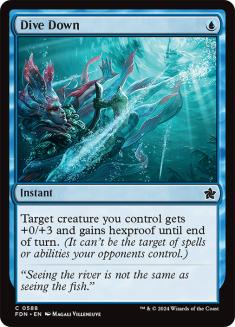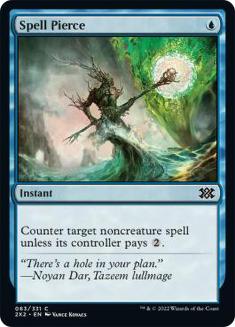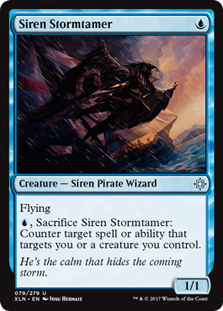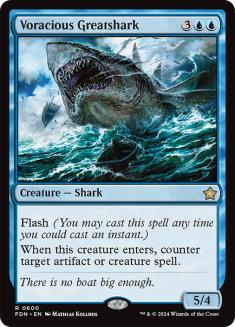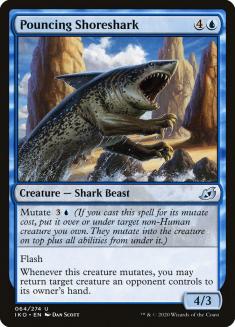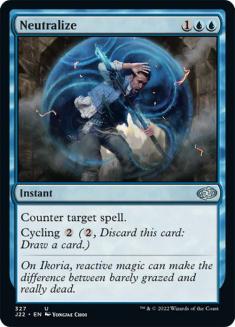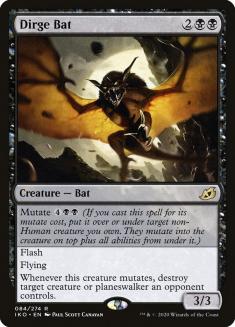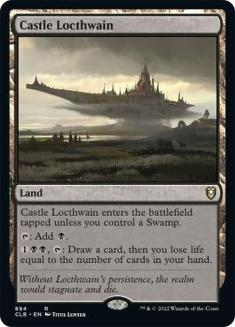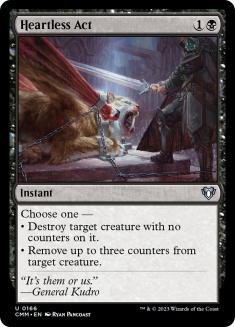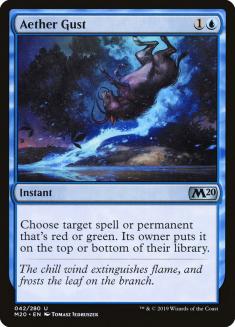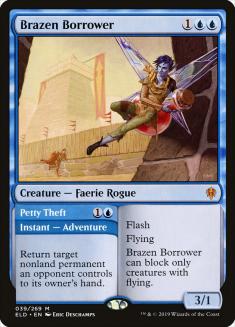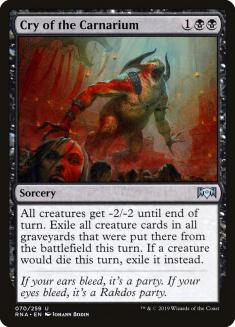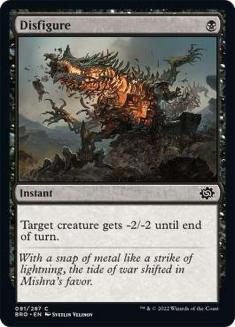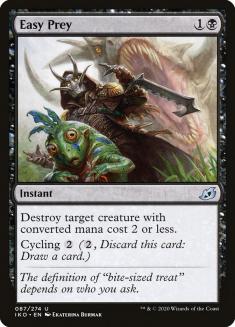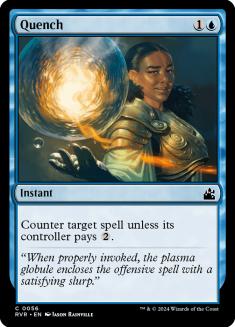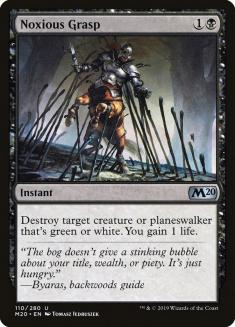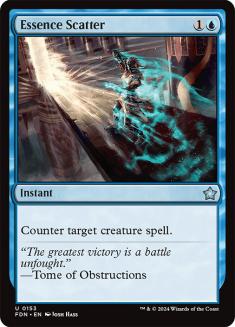There are many players in the game that are often associated with a particular deck. You probably associate, for example, Willy Edel’s name with Jund, or Corey Burkhart’s name with Grixis Control, or Brandon Burton’s name with Burn, or Guillaume Wafo-Tapa with blue control decks in general. A while ago, my name was most often associated with Faeries.
For those who don’t know it, Faeries was a Dimir deck from Lorwyn block that combined elements from both control and aggressive decks. It was full of instants and creatures with flash, so you always had options, and you could adopt a different playstyle depending on each situation. This was right up my alley in terms of playstyle and skillset, and I had a lot of success with the deck for as long as it remained legal – I Top 8’ed two Pro Tours and a Grand Prix with the deck, and I also took it to a first place in Brazilian Nationals.
Because I liked the deck so much, I often find myself gravitating towards decks that are similar to it. Every time a new set comes up, I try to revive the deck, and it is basically never good enough.

This time, however, it might just be.
Ikoria has a flash subtheme going on, spearheaded by Slitherwisp. In fact, there are enough good cards in black and blue to create an entirely new archetype — Dimir Flash. Or, as I like to think of it, Faeries 2.0. Except instead of Faeries, you have Sharks. Or something.
Slitherwisp is a pushed card. The body is unimpressive — a 3/2 doesn’t beat much in combat — but it has flash itself and it turns half the cards in your deck into cantrips that damage your opponent! The first time I read Slitherwisp, I thought you had to pay one life to draw a card, and that seemed reasonable enough. Slitherwisp is an engine unto itself (you play flash cards and draw into more cards, some of which will have flash too), which means it can dominate the battlefield if left unchecked.
In return for all this power, Slitherwisp doesn’t demand much from you — all it wants is cheap cards with flash. Given that there are plenty of cheap flash cards that already work with each other, this isn’t hard to accomplish. In fact, the biggest price Slitherwisp demands is on your manabase, since it costs double black in a deck that is normally base-blue.
Traditionally speaking, Faeries-type decks excel when their opponents play expensive, sorcery-speed cards. If that’s the case, you can usually stick a threat and then untap and have free rein of the game. If they cast something meaningful, you deal with it, and if they don’t, you add another threat to the battlefield. Dimir Flash will be no different. In Standard, if your opponent begins the game by revealing a Keruga, the Macrosage; a Gyruda, Doom of Depths; or a Yorion, Sky Nomad, you should have a pretty good matchup.
The counterpoint is that, if your opponent is playing a lot of cheap creatures and cheap removal, you’re in trouble. Your reactive spells do not work as well if you’re behind, and trying to deal with Gutterbones or Cauldron Familiar with a hand that’s full of Mystical Disputes and Neutralizes is usually a failing proposition. If your opponent reveals Lurrus of the Dream-Den before the game starts, that could also spell bad news. Given that a lot of your creatures cost two or three mana and have one or two toughness, a deck full of Shocks could trade with you very profitably as well.
So, Dimir Flash is a metagame call. If you expect more slow, clunky decks with the big companions, it’s going to be good. If people are playing aggro decks full of Shocks, it’s unlikely to do well.
“But PV, why would I play Dimir Flash instead of Simic Flash? Isn’t Nightpack Ambusher really good?”
Yeah, Nightpack Ambusher is really good. I’d say that Nightpack Ambusher is better than any individual black card — even better than Slitherwisp. The card is seriously broken in a flash strategy, and losing it is a big loss. However, black offers something that green doesn’t — removal spells.
In a world of Lurrus and Priest of Forgotten Gods, or one where people sideboard in Destiny Spinner in their Gyruda decks, being unable to remove a creature from the battlefield is a big problem. The Simic deck has a really poor sideboard, as there are simply no good options for killing creatures. The Dimir deck can not only maindeck removal, it can also sideboard into a control deck that can actually go toe-to-toe with these creatures. In many matchups, the Simic deck has to keep a lot of its counterspells in the deck, even when they aren’t good, because there’s nothing to bring in — this is never true with the Dimir deck.
The counterpoint to this is that the black creatures really are more vulnerable to toughness-based removal. Shock, Bonecrusher Giant, and even Deafening Clarion can be quite good versus Slitherwisp, but they don’t do much against Nightpack Ambusher. Again, it’s a metagame choice. I believe Simic is better versus red-based removal (for example, Fires of Invention, even though Dimir is still favored there) but Dimir is better versus decks with cheap creatures you want to kill.
“But PV, how about I play Slitherwisp and Nightpack Ambusher?”
Honestly, I tried that and I thought the mana just didn’t work. Too many lands entered the battlefield tapped (which is a huge issue for this deck) and it was hard to coordinate BB, GG and UU. I also tried a version without any heavy blue commitments, but the mana was still an issue and I ended up having to cut too many cards I wanted to play. I’m not saying it can’t work, but I think you’re better off choosing either Simic or Dimir.
So, let’s analyze the other options that Ikoria brings us for the archetype:
This card is quite good and has powerful applications in different stages of the game. It’s possible to lead with a one-drop and then immediately cast this and just ride that creature to victory, especially if it has flying, but this is a more dangerous proposition than it was in old mono-blue decks, as you no longer have access to Dive Down, Spell Pierce, or Siren Stormtamer.
This means that the plan of “cast Curiosity and ride this creature to victory for the rest of the game” is a lot more vulnerable than it was before. If your opponent doesn’t have removal, you can easily do that (and some people don’t in this format), but if they have a cheap removal spell in hand (such as a Bonecrusher Giant) it’s very hard for you to actually protect your creature if you cast this on your turn.
Luckily, you don’t have to go all-in on it on Turn 2 most of the time. You can hold this for later in the game after your opponent has already spent their removal spell, or you can cast it at the end of the turn so you have untapped mana to protect your creature. You can also just cast it as a 2/2 with flash, which happens a lot.
Cunning Nightbonder is an interesting one. On first impression, I assumed my Dimir Flash decks would certainly want four copies, but at this point I don’t think they actually do. The issue with this card is that it’s working in two different ways — it’s quite good with the flash mutate creatures, which are the ones with expensive costs, but at the same time it’s a Human, so you can’t mutate on it. If it curved naturally into Pouncing Shoreshark, for example, I’d be a lot more interested. As it is, if you draw too many of them, you could just not have any mutate targets. I still like the card; I just don’t maindeck it as a four-of.
Voracious Greatshark is powerful — a 5/4 can actually be the king of the battlefield, as opposed to Frilled Mystic’s 3/2 body which trades with a two-drop. If you’re ahead and your opponent casts a creature into Voracious Greatshark, the game will be over in two turns. But it’s also quite expensive, perhaps prohibitively so. I think that, if you run multiple copies of Cunning Nightbonder, Voracious Greatshark is a good card, as it’s a steal for four mana (and sometimes even three), but if you’re always paying full retail I don’t think this is good enough to maindeck.
Mistbind Clique, is that you?
No, seriously. Obviously Mistbind Clique is a better card, but the parallels are kinda there. It costs the same (3U), you have to give up a creature to cast it, and then you end up with a four-power creature when all is said and done. It also has flash and can be a nightmare to play around because it produces two different effects when you cast it (it upgrades a creature and bounces another). Basically, with either card you can put them in a “doomed if you do, doomed if you don’t” situation.
I’ve had a ton of fun playing with Pouncing Shoreshark and it’s better than it looks. The fact that you can use it with Sea-Dasher Octopus or Dirge Bat comes up a lot, and you can also just cast it as a 4/3 flash creature if you have nothing else on the battlefield. The main issue is that it doesn’t actually play very well with Slitherwisp. Even though Slitherwisp is a non-Human, you’re not meaningfully upgrading it, and then it’s a poor use of four mana when all you want is to play multiple cheap cards in the same turn.
All in all, I’ve had better experiences with Mistbind Clique Pouncing Shoreshark in a Mono-Blue build, since that’s a much more tempo-oriented deck with more cheap flyers and creatures with +1/+1 counters that are better to mutate onto. In Dimir, you have some hands where you have a ton of removal and bouncing a creature doesn’t accomplish that much because you’re not necessarily racing your opponent.
Common wisdom seems to have decided that Neutralize is a better card than Sinister Sabotage. In this deck, I’m not entirely sure that this is true. Sinister Sabotage is obviously better if you’re casting it, so how often do you need to believe you’re going to want to cycle it for it to be better? If I’m cycling it one in ten games, Sabotage is better. If I’m cycling it one every two games, Neutralize is better. Where do you draw the line?
Right now I have Neutralize in my deck, but that’s mostly because of the mana — I really want to be able to hit my early land drops and my colors, and sometimes I just cycle it on Turn 2 to fix that (especially if I don’t have access to double blue). If you play more lands in your deck, however, then Sabotage could be better. You’re less likely to want to dig early and more likely to want to surveil a land to the bottom of your deck.
I originally had Dirge Bat in my deck with Cunning Nightbonder, and while it does make it much easier to mutate, I think the card is good enough without the accelerant. You can cast it as a 3/3 flying flash creature and then mutate Sea-Dasher Octopus on top of it to destroy a creature, or you can wait a little and mutate this for the same effect, and both play patterns come up reasonably often in the deck. I also like this card because, unlike all the other creatures in the deck, it survives Bonecrusher Giant and Shock, and can’t be stolen by Claim the Firstborn.
Here’s the list I’ve been playing:
Creatures (22)
- 4 Spectral Sailor
- 4 Brineborn Cutthroat
- 3 Brazen Borrower
- 1 Dirge Bat
- 4 Sea-Dasher Octopus
- 2 Cunning Nightbonder
- 4 Slitherwisp
Lands (17)
Spells (21)

There are a lot of random numbers in this deck, but a lot of the cards are situational and you don’t want to end up with too many of the ones that are bad in a single matchup. This is literally what I’ve been playing, so I like these numbers, but obviously the format is still new and the metagame changes every day, so I’m experimenting with different things. I assume the end result will be a little more streamlined than this but not strongly so.
One card I want to call attention to is Essence Scatter, which has gotten much better now that people have companions. If I didn’t have access to black removal, I’d probably play more of them.
The mana base is also tricky. Tapped lands are bad, but it’s very hard to play without access to both BB and UU early in the game. I’ve opted for two Zagoth Triomes to kind of fix that. I believe cycling is better than the one life you could gain from Dismal Backwater.
I see some people playing Castle Locthwain, and while I understand why that is, I’m not a huge fan. Even with the Triomes having basic types, if Castle Locthwain ever enters the battlefield tapped later in the game it can be a huge problem, and it could happen if it’s your first black source or if you had a Temple (or two Castle). You could choose to play more Triomes and fewer Temples to minimize it, but I simply find the scry more valuable. This isn’t really a deck that activates Castle Locthwain very often — you already have Spectral Sailor, which makes the card superfluous, and it’s not uncommon to have many cards in your hand by the middle of the game (you do play Slitherwip and Sea-Dasher Octopus), so it can be costly. Obviously it’s going to come up from time to time, I just don’t think it comes up enough to justify the drawback.
Sideboard
The sideboard is designed so that you can bring in enough removal versus the aggressive decks to take out all your bad counterspells. By doing this, you morph into a slightly different deck that no longer needs to have the right reaction at exactly the right moment. I have more counterspells in the sideboard rather than discard spells because discard spells lose a lot of effectiveness versus companions.
The biggest question for me right now is Cry of the Carnarium. It’s excellent versus the Mono-Black or Lurrus Orzhov decks, but against other aggressive decks I’d usually rather have more cheap removal, since that won’t kill your own creatures. Right now I think the Lurrus decks are popular enough to justify it, but again this could change at any minute.
Sideboard Guide
VS Jeskai Fires
Out:
In:
Versus them, I believe the best bet is to try to counter the creatures rather than killing them. If they resolve something, you can either try to bounce it with Brazen Borrower or simply race it.
VS Black-Based Lurrus Decks
Out:
In:
Post-sideboard, you morph into a more controlling deck. They don’t have a lot of removal to deal with your card-advantage engines, so you have a good shot if you can stop theirs and stay alive long enough to ride yours to victory.
Cunning Nightbonder is usually better than Borrower if they’re the super-low-to-the-ground version with creatures you can actually block, but if they have a slighly more expensive build, Borrower could be better.
VS Temur Flash / Temur Reclamation
Out:
In:
This is assuming they’re playing the version with Frilled Mystic and Nightpack Ambusher — this has been the one I play the most against. If they aren’t playing that version, then Essence Scatter isn’t good (and neither is Noxious Grasp).
Quench isn’t bad early in the game (and countering an Uro, Titan of Nature’s Wrath or a Growth Spiral with it isn’t the worst use), but they often out-mana you so much that they can just pay the two mana for Quench very early in the game. Mystical Dispute is a better card for countering the early acceleration (you should often use it there if you can).
VS Gyruda Combo
Out:
In:
VS Dimir Flash
Out:
In:
In the mirror, it’s much better to have removal than to have counterspells. Anything worth countering is a creature anyway, and the removal is much more efficient at dealing with the threats (plus it’s harder to counter with Mystical Dispute, and they’re going to have four of those as well). Having the black removal makes you a big favorite over the Mono-Blue Flash decks.
There are many different decks being played right now, but the gist of it is always the same — if they have a ton of cheap creatures, take out counterspells for removal. If they have a ton of expensive cards, take out removal for counterspells.
Tips and Tricks
- In this deck, it’s often right to hold Spectral Sailor in your hand. The couple of points of damage you can sneak in early in the game are less valuable than triggering a Slitherwisp or even a Brineborn Cutthroat. I only cast Spectral Sailor on Turn 1 if I’m going to follow it up with Sea-Dasher Octopus or if I suspect I need to create a battlefield presence to beat Teferi, Time Raveler. For example, if you’re on the play and you have Slitherwisp or Brazen Borrower, if you pass and they cast Teferi, they can just bounce your three-drop. In this case you need to have another creature on the battlefield to be able to kill Teferi.
- Keep in mind that mutate can change the converted mana cost of your creatures. This comes up more often when you have Pouncing Shoreshark in your deck, but it can also be relevant with the other mutate creatures. In one of my games, I countered a Vraska, Golgari Queen activation with a Dirge Bat, for example.
- It’s usually better to wait than to expose your Slitherwisp to a removal spell, unless you believe they will just keep the removal spell up forever. For example, if my opponent has Bonecrusher Giant in their deck and passes with two mana up, I tend to hold the Slitherwisp and just cast something else.
- You can cast Cunning Nightbonder in response to an opposing counterspell. For example, if you have five lands, you can castSlitherwisp, and then, if they cast Mystical Dispute, you can flash in Cunning Nightbonder in response. In a counter war over a flash card, this is a two-mana Frilled Mystic, which can be quite powerful.
- If you have a window to play a Triome early in the game, you should almost always do so rather than waiting to cycle it later on, even if you have a lot of lands in your hand already. Cycling 3 is very costly and you only do it much later in the game.
- You need to plan ahead for the fact that Slitherwisp costs double-black. More than once I had a whole plan of how my turns were going to go and then I found myself unable to cast it when I wanted just because it looks so much like a double-blue card to me.
- If your opponent bounces a creature you’ve mutated into, you’re going to get all the cards back, not just the front one (unless they do it in response to the mutate, in which case the card you just played goes onto the battlefield instead).
- Don’t forget that Dirge Bat can destroy planeswalkers!
I’ve had a ton of fun playing this deck on Magic Arena, and if you’re looking for something to beat up on the expensive companions, make sure to give it a try.

